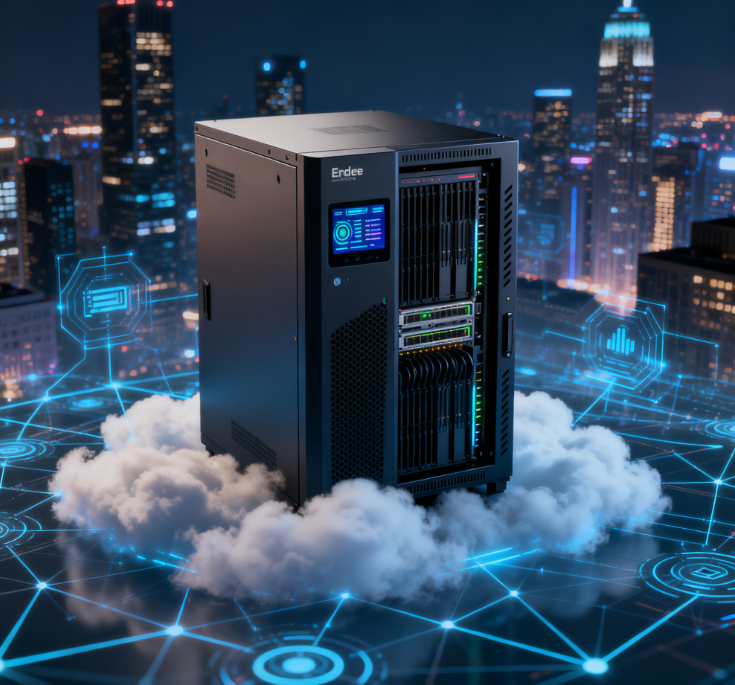No more misty-eyed guesswork! A guide to understanding core server specifications: CPU, RAM, HD, and Bandwidth
In today's digital age sweeping across every industry, both start-ups and large corporations rely on online and intelligent business operations. The unsung heroes powering this transformation are the servers operating round the clock.
When selecting a server, have you ever felt bewildered by the configuration lists provided by vendors? “How many CPU cores are sufficient?” “Is more memory always better?” “What exactly is the difference between SSD and HDD?” “How many megabits of bandwidth should I choose?” These questions are like multiple-choice tests, directly impacting your business's performance, stability, and costs.

CPU: The Server's “Brain” and “Command Centre”
The CPU serves as the server's task-processing core, determining its computational power and parallel processing speed.
Key parameters:
Core count: Think of it as “how many brains it possesses.” More cores mean greater capacity for simultaneous task handling. Scenarios like video rendering, scientific computing, and large-scale database applications demand numerous cores for parallel processing.
Thread count: Typically leveraging hyper-threading technology, a single physical core can simulate two logical cores, further enhancing parallel efficiency. Imagine a brain capable of “multitasking.”
Clock Speed: Represents the brain's “thinking speed,” measured in GHz. Higher clock speeds enable faster processing of individual tasks. For applications demanding high single-core performance (e.g., certain game servers, high-frequency trading systems), a high clock speed is crucial.
Layman's Interpretation:
High clock speed, few cores: Like a ‘technical specialist,’ excelling at swiftly and intently completing a single complex task.
Multiple cores with moderate clock speed: Like a ‘large team’ excelling at collaborative division of labour to handle vast numbers of simple tasks simultaneously (e.g., high-concurrency web requests).
Memory: The Server's “Workbench”
Memory serves as the CPU's direct temporary data storage space. Its capacity determines how many ‘active’ tasks the server can simultaneously manage.
Key Parameters:
Capacity: The most critical metric, measured in GB. Greater capacity equates to a more spacious workbench, accommodating more concurrent data and applications.
Type and Frequency: Examples include DDR4 and DDR5. Higher frequency enables faster data transfer, enhancing the efficiency of data retrieval and storage.
Layman's terms: Imagine the CPU as a chef and memory as the kitchen worktop. A larger worktop (more memory) allows the chef to prepare more ingredients (data) simultaneously, naturally speeding up dish preparation (request responses). If the worktop is too small, the chef must constantly dash back and forth to the storeroom (hard drive) for ingredients, drastically reducing efficiency (causing lag and delays).
Hard Drive: The Server's “Permanent Warehouse”
HDDs handle long-term storage of all data, including operating systems, applications, website files, and databases. Their performance directly impacts data read/write speeds.
Key Parameters:
Type: This is the critical decision!
HDD: Traditional mechanical hard disk drives. Large capacity and low cost, but slow speed (mechanical components cause lengthy seek times). Suitable for cold data storage, such as backup files and log archives.
SSD: Solid-state drives. Fast speed (electronic read/write with no mechanical latency), high shock resistance, low power consumption, but higher cost. The current mainstream choice for servers, significantly enhancing system responsiveness.
Capacity: The total storage size, measured in GB/TB. Select based on your estimated data volume.
RAID: Disk array technology. Combines multiple drives to achieve data redundancy (preventing loss from single-drive failure) and boost read/write performance. Common types include RAID 1 (mirrored backup), RAID 5 (balances performance and security), and RAID 10 (high performance + high security).
Bandwidth: The Server's “Highway”
Bandwidth determines the server's data transfer capacity with external networks (primarily the internet).
Key Parameters:
Bandwidth size: Measured in Mbps (megabits per second). This represents the “width” of the motorway. Greater bandwidth allows more data to pass through simultaneously, resulting in faster website access and file downloads for users.
Line type: Such as BGP lines or CN2 GIA lines, primarily affecting network latency and stability. This is particularly crucial for applications requiring nationwide user coverage.
Layman's terms: Imagine the server as a popular tourist attraction, and bandwidth as the road leading to it. A 1Mbps lane allows only a few visitors (users) to enter slowly, while a 100Mbps motorway enables thousands to pass smoothly. If the road is congested (insufficient bandwidth), even the finest attraction (server performance) will leave visitors queuing at the entrance with a dreadful experience.
How to weigh factors comprehensively?
An excellent server is an art of balancing CPU, memory, storage, and bandwidth. These components work in concert; any bottleneck will compromise overall performance.
CPU-intensive operations (e.g., computation, rendering): Prioritise investment in CPU and memory.
IO-intensive operations (e.g., websites, databases): Prioritise investment in memory, SSD storage, and bandwidth.
Data storage services (e.g., cloud storage, backups): Prioritise hard drive capacity and RAID configuration.
When selecting servers, we should avoid blindly pursuing the highest specifications. The optimal approach is to base decisions on actual business requirements while allowing room for future expansion. Consult with reliable service providers; they can typically offer professional configuration recommendations tailored to your operational context.



